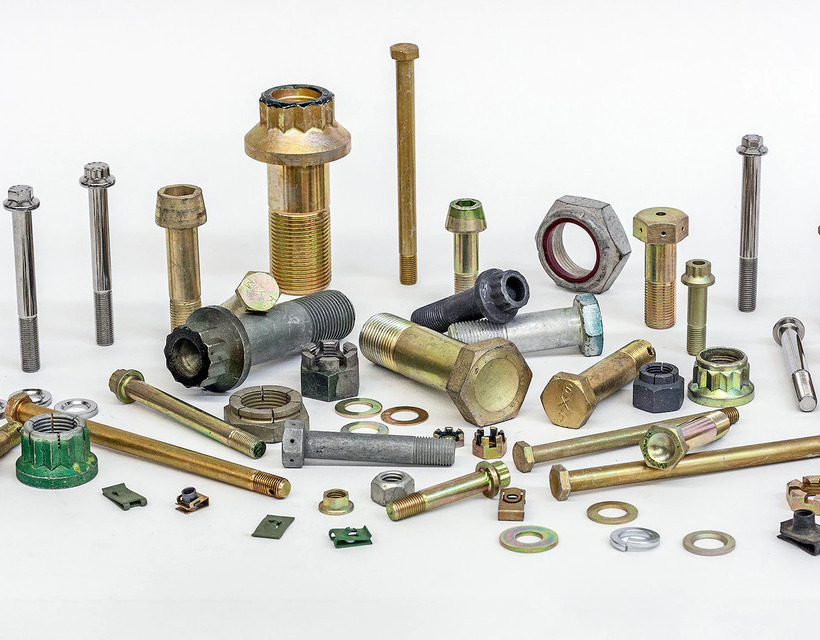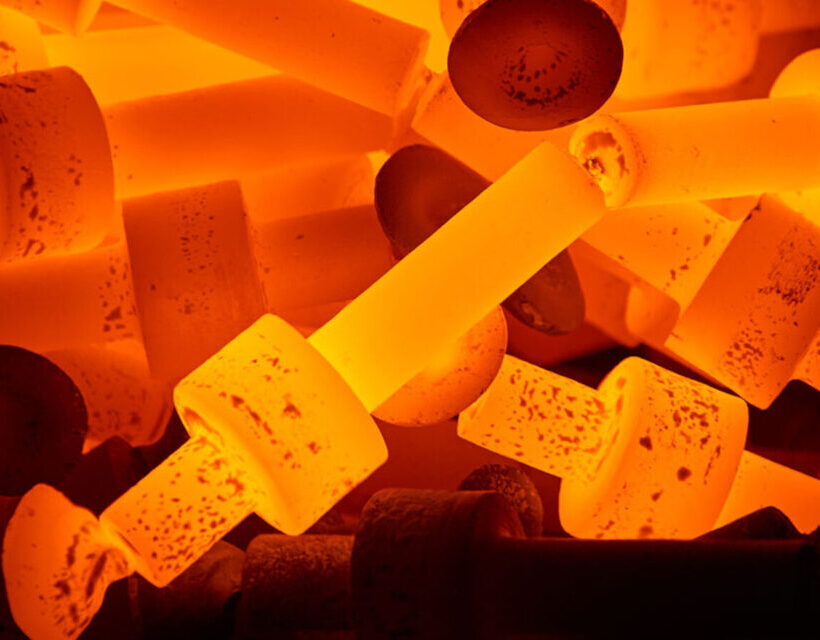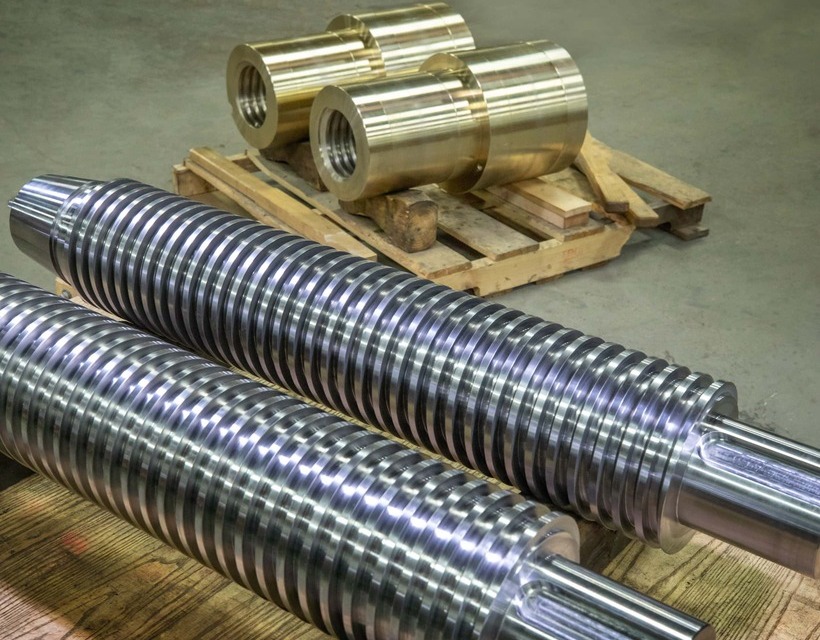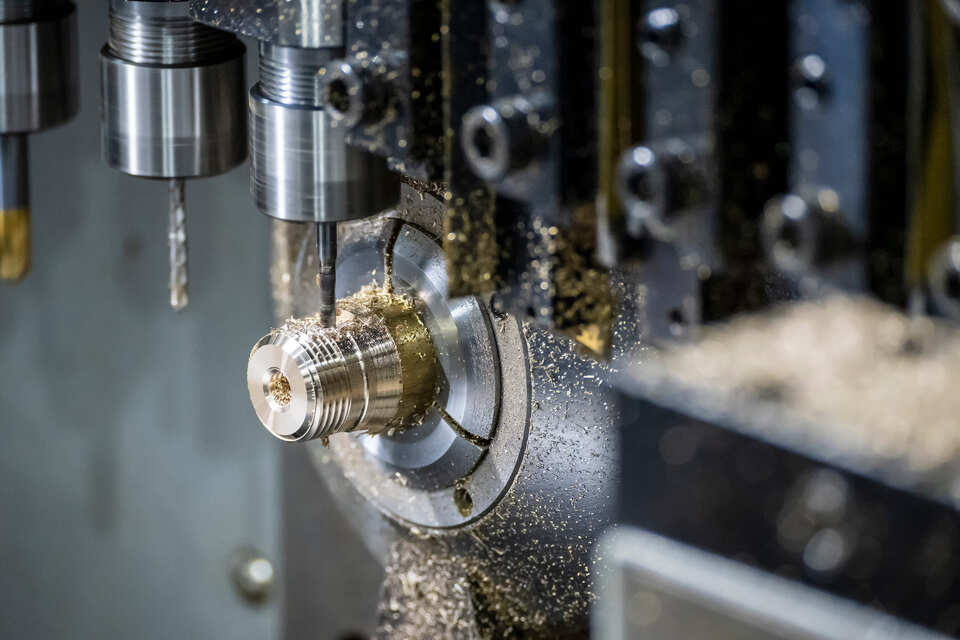Aerospace fastening components are essential for the assembly and operation of aircraft. Brass is a material often used in aerospace fasteners due to its advantageous properties. It has excellent corrosion resistance and malleability, making it an ideal choice for high-performance parts.
This guide will discuss the various applications of brass in aerospace fasteners and how it can benefit aircraft operations. Brass has been utilized in aerospace fastening since the dawn of aviation. Its unique properties make it incredibly versatile, enabling its use in a variety of applications from small components to large structural elements.
This guide will explore the advantages of brass in aerospace fasteners, such as corrosion resistance, malleability, durability, and strength. The guide will also examine the various types of brass fasteners available and their appropriate applications. By understanding these benefits, readers can gain a better appreciation for the importance of brass in aircraft operations.
Overview Of Aerospace Fasteners

Aerospace fasteners are an essential element of aircraft and spacecraft construction, designed to join and secure parts together.
Aerospace grade fasteners are expected to be able to withstand extreme temperatures, vibration, and pressure while also providing a high strength-to-weight ratio. In fact, the aerospace industry is one of the top three most demanding industries when it comes to fastener performance, with over 10 billion aerospace grade fasteners produced each year.
Brass is a common material used in aerospace fasteners due to its unique properties. It offers excellent corrosion resistance, making it ideal for components that require high temperature performance and durability in harsh environments. Brass also has a very low coefficient of friction, which can help reduce wear on other parts as well as provide a higher strength-to-weight ratio than other materials. Additionally, brass is easily machined into various shapes and sizes depending on the application requirements.
All these advantages make brass an attractive option for many aerospace applications.
Advantages Of Brass In Aerospace Fasteners
The use of brass for aerospace fasteners has several advantages. Cost effectiveness is one of the major benefits associated with brass fasteners. Brass is a relatively inexpensive material, making it an ideal choice for many applications.
In addition to providing a cost-effective solution, brass also offers excellent strength to weight ratios when compared to other materials used in aerospace fastening applications. This makes it ideal for applications requiring a lightweight yet strong product. Moreover, its high mechanical strength ensures that it can be used in demanding environments such as those found in aerospace and aviation industries.
Brass also has excellent corrosion resistance properties, making it a great choice for applications where durability and longevity are important. The malleability of brass allows it to be easily formed into complex shapes without compromising its structural integrity.
Furthermore, brass is non-magnetic and non-sparking which makes it the preferred material for aircraft wiring systems and other electrical components that must remain protected from sparks or interference from other magnetic fields.
In short, brass provides an ideal combination of cost effectiveness, strength to weight ratio and excellent corrosion resistance properties that make it an excellent choice for aerospace fastening applications. Its malleability further adds to its appeal by allowing for complex shapes that are both lightweight and strong while meeting the requirements of demanding environments found in the aerospace sector.
Types Of Brass Fasteners

Brass is a popular choice for aerospace fasteners due to its malleability and strength. It has a unique combination of properties, making it an ideal material for aerospace applications.
The surface finish of brass fasteners is important when selecting the right type for a specific application. Achieving the desired surface finish requires careful selection of raw materials, processes, and techniques.
When selecting brass fasteners, there are several criteria that should be taken into account. Strength, malleability, corrosion resistance, and durability are all important factors when choosing the right material. Additionally, cost considerations should also be evaluated so that the most cost-effective option can be chosen without compromising on quality.
Depending on the application, other factors such as heat resistance may also need to be considered when selecting brass fasteners.
Standardization Of Brass Fasteners
The use of brass fasteners in the aerospace industry is an ever-evolving field, with no two fasteners being exactly the same. It is a complex and intricate process, where customization requirements and manufacturing processes must be carefully considered to ensure that only the highest quality products are delivered.
From simple bolts used to fix components together to complex special-purpose screws, each aerospace fastener must meet strict specifications in order to perform its intended function.
Despite the complexity of this area, standardization of brass fasteners has become increasingly important in recent years. This has led to a number of new regulations and guidelines that have been put in place by both national and international bodies, ensuring that all parts used within the aerospace industry are made up to the same standards.
In addition to this, manufacturers have also developed systems that allow for repeatable production processes and quality control protocols which help ensure that all manufactured parts meet their desired specifications.
Heat Treatments For Brass Fasteners

Brass fasteners used in the aerospace industry must undergo a number of treatments to ensure they are durable and reliable.
Heat treatment is one such process that helps to improve the mechanical properties of brass. Heat treatment is usually done by annealing, which involves heating the metal above its recrystallization temperature and then cooling it slowly. This helps to reduce internal stresses and strain hardening, as well as increase ductility and toughness.
In addition to heat treatments, surface treatments are also often applied to brass fasteners to improve their corrosion resistance and wear resistance. These treatments can include electroplating, chemical conversion coatings, thermal spray coatings, or other surface treatments.
The choice of which surface treatment to use for any particular application will depend on the desired performance characteristics of the component and the environment that it will be exposed to during service.
Machining And Cutting Of Brass Fasteners
The machining and cutting of brass fasteners is a complex and demanding process that requires expert precision. Each component must be carefully measured and checked for accuracy, as it will ultimately affect the performance of the entire system in which it is being used.
This level of precision allows for grinding techniques that are more precise than ever before, yielding parts with tight tolerances and perfect fitment.
Tapping methods are also essential when machining and cutting brass fasteners, as the threads in particular require precise accuracy to ensure proper function. The tapping process involves cutting grooves into the material which allows for threads to be formed, thereby allowing two components to securely fasten together.
Specialized tools are often needed to perform this task, such as drills and taps that are specifically designed for metalworking applications. Utilizing these high-precision tools ensures that the threads conform to exact specifications while also increasing production output times.
Threading Of Brass Fasteners

The threading of brass fasteners is a critical step in the machining process. The most common technique for threading these components is single-point threading, which involves cutting of threads using a turning tool with a single point. This method is suitable for brass materials due to its ability to produce high quality threads with good surface finish.
It is also possible to use other threading techniques such as die threading and roll threading, but they are not as common due to their lower precision and cost requirements.
Regardless of the technique used, it is important to ensure that the threaded brass fasteners have sufficient strength. Achieving the correct level of strength requires careful selection of the appropriate thread profile and tap drill size according to the application requirements.
It is also important to consider factors such as lubrication, cutting speed, feed rate, clamping force and tool geometry when determining the optimal thread strength for a given brass material.
An experienced engineer should be consulted if necessary to ensure that all parameters are properly considered before selecting the appropriate threading techniques for a given application.
Corrosion Resistance Of Brass Fasteners
Brass fasteners in aerospace applications are subject to extreme conditions. Their ability to withstand corrosion and maintain their structural integrity is key for a successful mission. Like a knight clad in armor, the alloy selection and coating processes of brass fasteners provide an essential layer of protection against the elements.
The alloy selection process for brass fasteners in aerospace applications includes alloys with high copper content such as C36000 and C37700. These alloys are proven to be resistant to corrosion under extreme environmental conditions. They also possess superior strength while maintaining their malleability and ductility, allowing them to be formed into intricate shapes that often require precise details.
Coating processes can further improve the resistance of brass fasteners against corrosive agents. Common protective coatings used on brass fasteners include zinc plating, cadmium plating, and electroless nickel plating. Each option has its own advantages and disadvantages depending on the application, so it is important to carefully consider each option when choosing the best possible solution for your project.
Testing Of Brass Fasteners
The testing of brass fasteners is a critical step in the manufacturing process. Testing helps to ensure that the fasteners meet the requirements for use in aerospace applications.
Coating technologies, such as galvanizing, are often used to protect against corrosion and wear. Fatigue analysis is also conducted to determine how much stress and strain a fastener can withstand over time. Testing methods such as tensile strength testing and hardness testing are used to evaluate the mechanical properties of brass and other metals used in aerospace fasteners.
In addition, metallurgical analysis is conducted to assess the chemical composition of brass fasteners and confirm that they meet the requirements for use in aerospace applications. Metallurgical analysis typically includes an evaluation of the alloying elements, grain structure, and microstructure of materials used in aerospace fasteners.
This helps ensure that these components have consistent quality over time and across different batches of material. The results of all tests are recorded and reviewed by a qualified engineer before any parts can be accepted for use in aerospace applications.
Applications Of Brass Fasteners
Testing of brass fasteners is essential for the aerospace industry to ensure that the products meet the highest standards of safety and reliability. Testing procedures vary depending on the type and purpose of the fastener, but generally involve non-destructive testing to check for physical defects, tensile strength tests, corrosion analysis, and other elements.
Now that we know how brass fasteners are tested, we can explore their applications in aerospace settings. Brass is an ideal material for aerospace components due to its strong mechanical properties; it is resistant to corrosion and abrasion, has good thermal conductivity, and low friction coefficient. Furthermore, brass fasteners are inexpensive compared to other metals such as stainless steel or titanium, making them a cost-effective option for many aerospace parts.
Installation methods for brass fasteners include self-tapping screws, rivets, and adhesives depending on the application. In addition to providing secure attachment points for aircraft components such as engine covers or electrical conduits, they are also used to reduce vibration in sensitive parts like instrumentation boards or control panels.
With proper installation methods and testing procedures in place, brass fasteners remain one of the most reliable choices for aerospace applications.
Conclusion
The aerospace industry is a complex and ever-changing field. In this environment, brass fasteners provide a reliable and powerful solution for aircraft components.
Brass fasteners symbolize the strength of the aerospace industry, with their ability to withstand corrosion, resist heat, and remain standardized throughout all applications.
Furthermore, brass fasteners represent the creativity of engineers in providing solutions that meet the needs of modern aviation. They are indispensable components in ensuring that aircrafts are secure and efficient.
As such, brass fasteners will continue to be integral parts of the aerospace industry.
